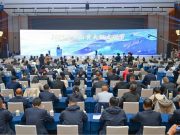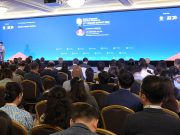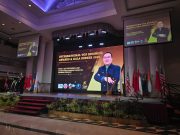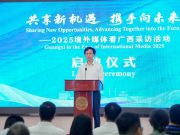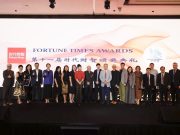(SINGAPORE 09.09.2025)In line with the country’s drive for AI development, at least 20 of China’s trillion-yuan cities – cities with a gross domestic product exceeding 1 trillion yuan have established dedicated institutions or frameworks and rolled out policies to promote extensive and deep integration of AI across industries and society, Chinese media reported.
In recent years, China’s AI industry has expanded remarkably. By 2024, its market size exceeded 700 billion yuan (S$126 billion), following a growth rate of over 20% for several years on end.
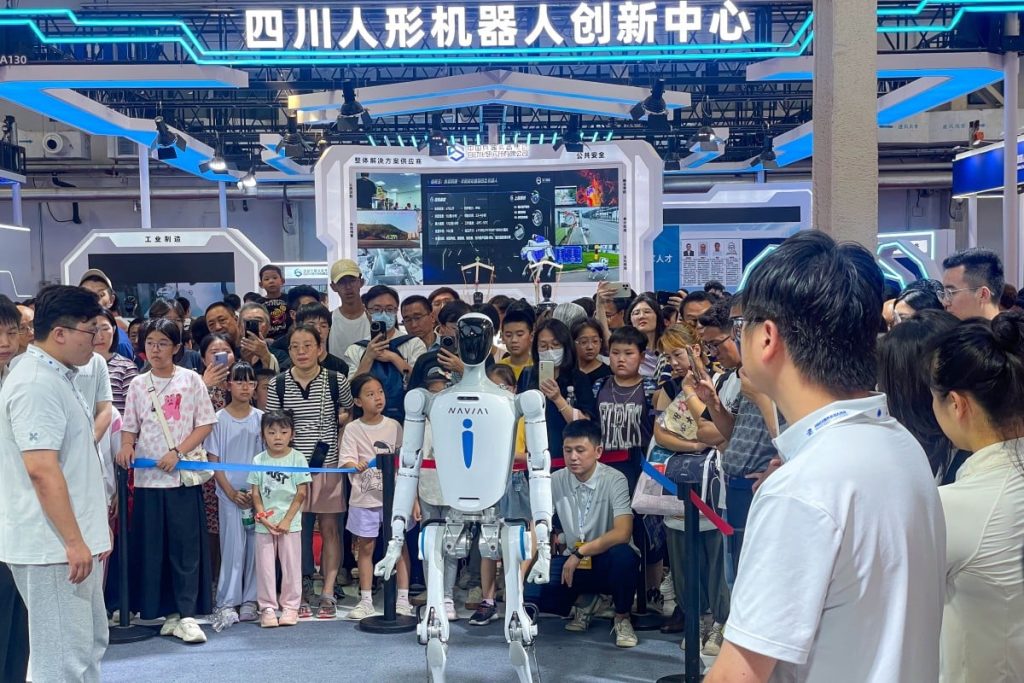
The industry now encompasses key segments across the chain, including data, algorithms, platforms, chips, and applications, reported 36 Kr, an online media focusing on entrepreneurship and technology.
Against this backdrop, local governments have implemented AI-focused policies and related initiatives in their territories, experimenting with diverse approaches to AI adoption — ranging from intelligent manufacturing to AI-assisted medical diagnostics to AI-enabled personalized education.
As China’s industrial capacity grows, national policy backing for AI has amplified. The 2024 Government Work Report highlighted the importance of “deepening R&D and applications of big data and AI” and introduced the “AI+” initiative.
In December last year, the Central Economic Work Conference reiterated the “AI+” initiative, and the 2025 Government Work Report further emphasized the need to “continue advancing the ‘AI+’ initiative.”
The “AI+” initiative refers to the Chinese strategy of integrating AI with industries and social sectors. It is not about AI in isolation, but AI “plus” something else.
Several Chinese cities with GDPs surpassing one trillion yuan (S$180 billion), being key engines of regional economic growth, have dynamically advanced their AI strategies, unveiling a range of “AI+” policies.
According to Time Weekly, since the start of this year, 20 of China’s 27 trillion-yuan cities—including Beijing, Tianjin, and Chongqing—have announced AI-related action plans, issuing a total of 32 documents.
The other trillion-yuan, AI-fostering cities are Shanghai, Chengdu, Qingdao, Suzhou, Wuxi, Hangzhou, Zhengzhou, Shenzhen, Wuhan, Changsha, Guangzhou, Ningbo, Hefei, Nantong, Xi’an, Dongguan and Fuzhou.
A closer review of these 32 documents reveals that they encompass both broad strategies for AI development and “AI+” initiatives, along with sector-specific plans to advance AI integration in areas such as manufacturing, healthcare, and education.
Beijing is especially noteworthy. This year, it released more AI-related policies than any other trillion-yuan city, covering domains such as healthcare, embodied intelligence, new materials, K–12 education, and industrialization. This demonstrates the wide scope of its policy initiatives and its leading role in advancing AI development.
Meanwhile, some cities remain focused on consolidating foundational infrastructure as a forerunner to broader “AI+” integration and application.
For example, in February, Wuhan introduced several policy measures, emphasizing expansion of inclusive computing power, enhancement of model innovation capabilities, promotion of data development and utilization, and provisions of project funding support ranging from 2 million to 5 million yuan.
Nantong is slightly more advanced. It released a plan that proposes upgrading of computing infrastructure, advanced deployment of intelligent computing centers, vertical domain development of advanced large models, localization, training, commercialization, and the creation of exemplary “AI+” application scenarios.
“AI+ Manufacturing” features in the largest number of policy documents. Industrial hubs such as Shanghai, Guangzhou, and Dongguan are driving AI-powered manufacturing, while cities including Qingdao, Suzhou, Wuxi, and Shenzhen are prioritizing embodied robotics.
For example, Shanghai’s plan highlights integrated circuits, automobiles, and high-end equipment as key industries, seeking to drive corporate innovation with AI, foster industry-tailored models, build specialized small-scale models for specific scenarios, and speed up the application of AI in industrial settings.
Beijing’s “AI+ Healthcare” action plan builds on the city’s strengths in AI technology, leading medical resources, and extensive health data. The plan aims to develop more than 30 core technologies and innovative products, recruit at least 100 high-level professionals, and create two to three competitive industrial clusters by 2027.
As for the education sector, cities such as Chengdu and Xi’an are pushing initiatives to improve the quality of primary and secondary education through AI applications and to introduce general AI courses.
Outside the trillion-yuan league, the AI sector is seen as a crucial engine for Wenzhou’s ambition to join the club. Recently, Wenzhou officially inaugurated the Wenzhou Municipal AI Bureau—the first AI bureau in Zhejiang Province and the country’s first at the municipal level.
An AI bureau in China is a government agency responsible for supervising, coordinating, and advancing the development of AI.
Hangzhou, capital of Zhejiang, does not have a dedicated AI bureau. It has established a robust institutional framework to promote and govern AI development. This involves multiple government departments, research institutions, and industry alliances.
Lin Xianping, Associate Professor at Zhejiang University City College and Executive Deputy Secretary-General of the China Urban Expert Think Tank Committee, told the Time Weekly that “local governments are vigorously vying to get to the top of new productive forces. This sets off a fresh wave of industrial competition.”
In China “new productive force” refers to innovative technologies, approaches, or capabilities that reshape the economy and production processes, driving greater efficiency, boosting productivity, or giving rise to entirely new industries.
Lin emphasized that regions across the country now see AI as the central driver of these new forces: “Whichever region achieves breakthroughs in AI-driven industries will secure a leading role in the future economic landscape.”
“China possesses the world’s most comprehensive and largest industrial system, with its manufacturing value-added representing roughly 30% of the global total.
This offers the most extensive and resource-rich ‘application field’ and ‘testbed’ for AI. By empowering manufacturing, AI’s potential is fully realized, directly reinforcing the nation’s economic foundation,” he continued.
Currently, China’s manufacturing is facing stiff challenges including a shrinking population, increasing production costs, and heightened global supply chain competition. AI-powered manufacturing offers a direct solution to these pressures.
Wang Peng, Associate Researcher at the Beijing Academy of Social Sciences, noted that besides driving the growth of new industries, AI is also refining consumption patterns and strengthening social governance.
The swift response from China’s local governments shows that AI development has moved from being an “optional consideration” to a “strategic must,” presenting a critical opportunity that cannot be missed, said Lin.




